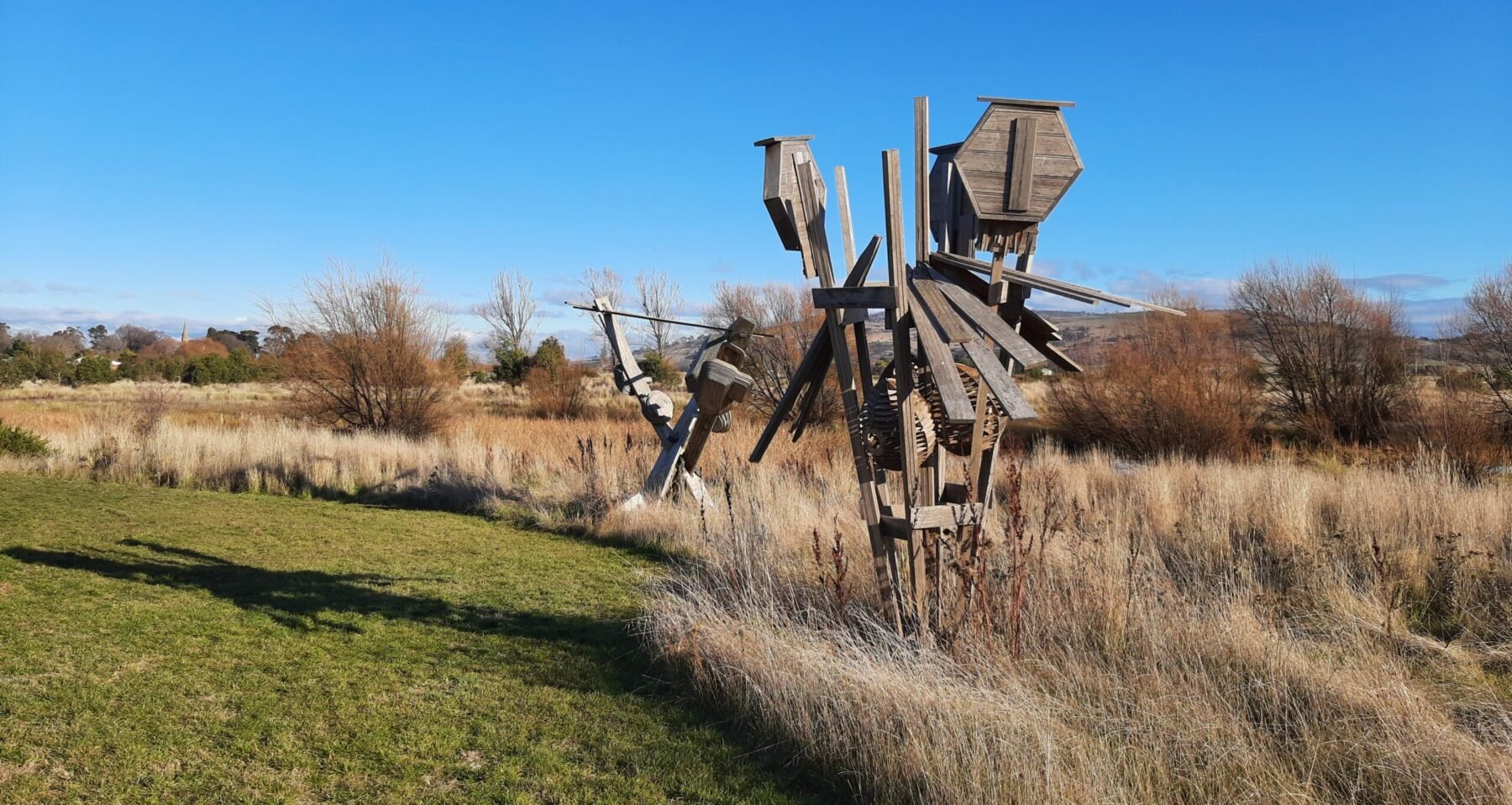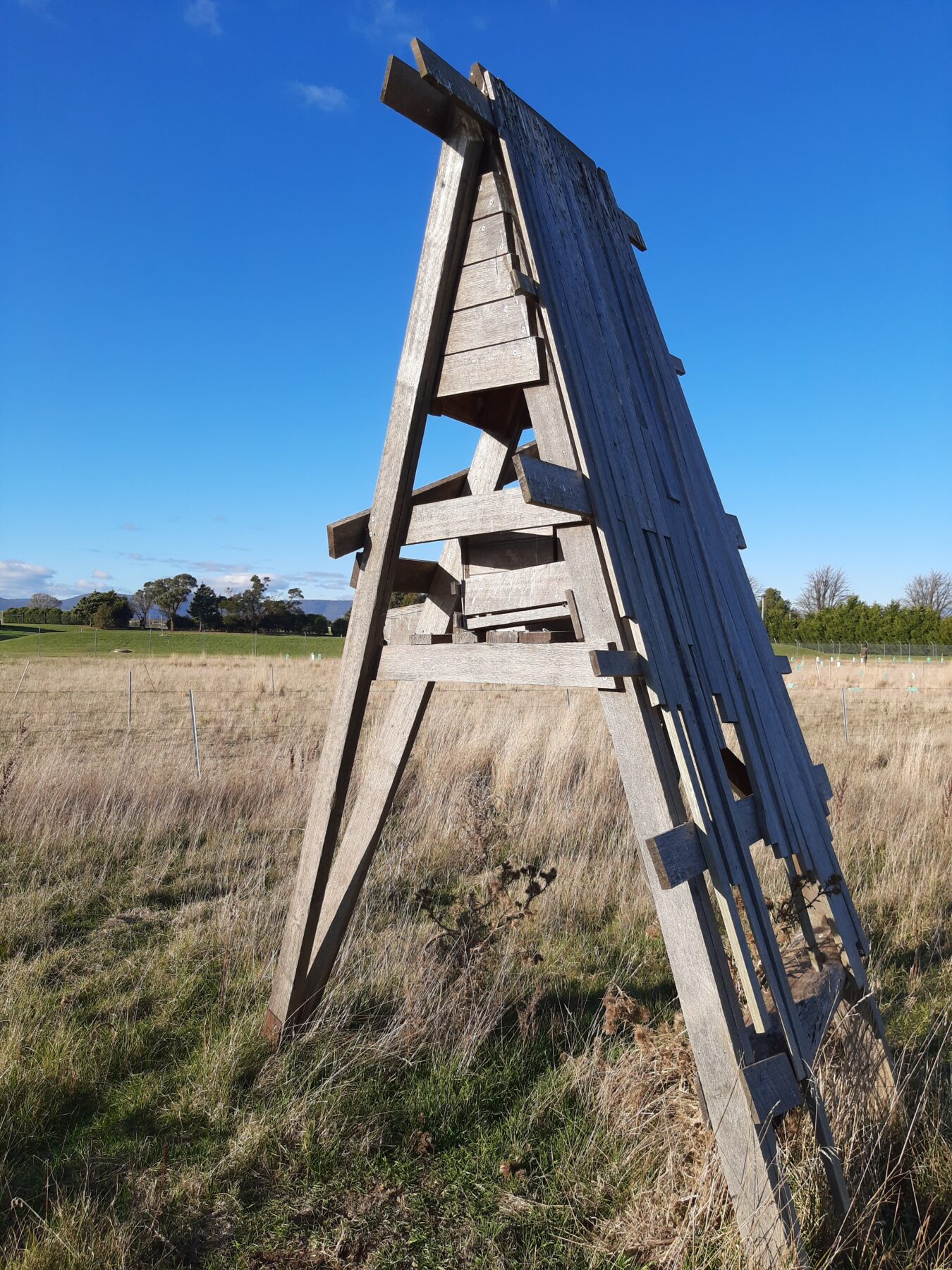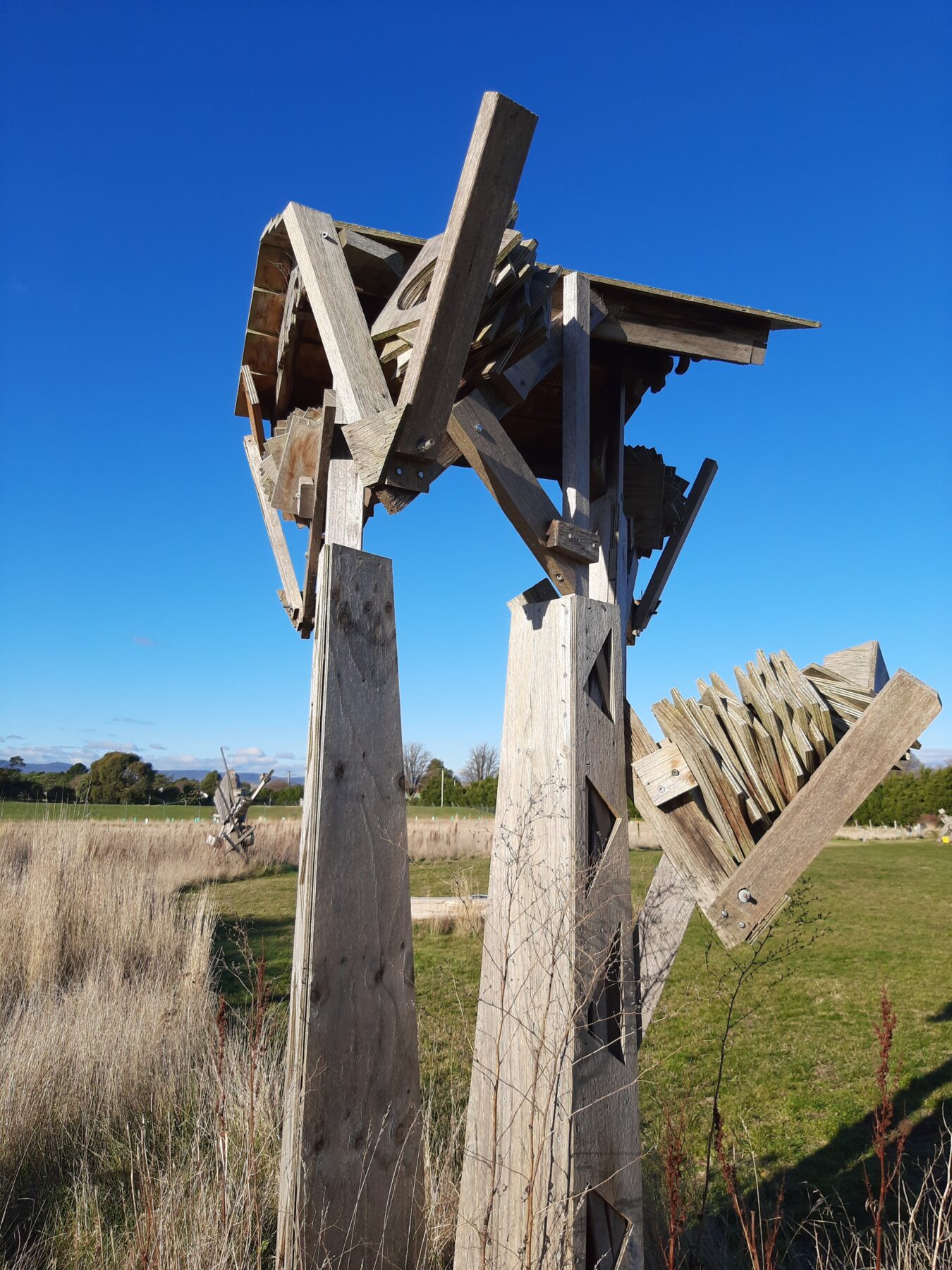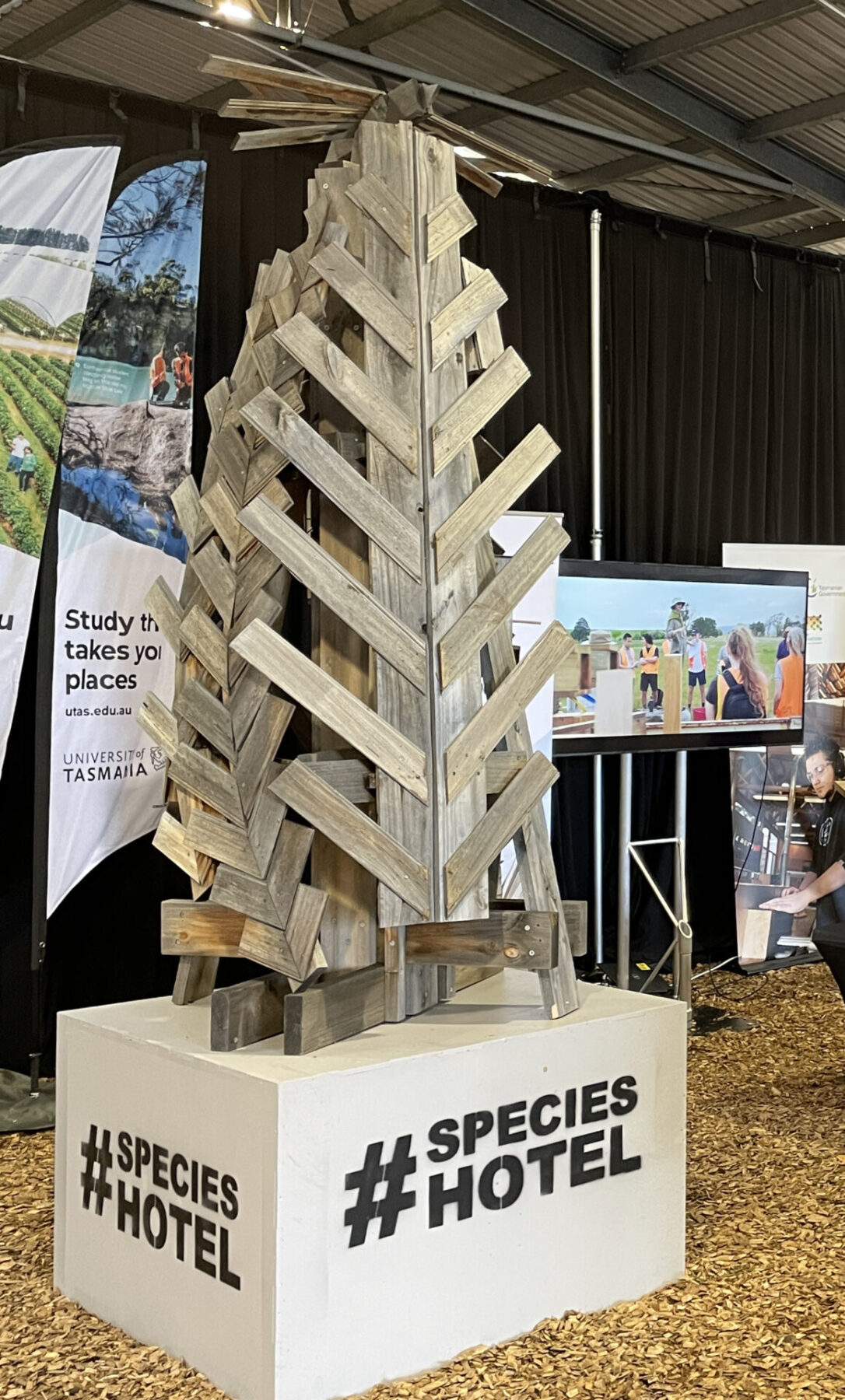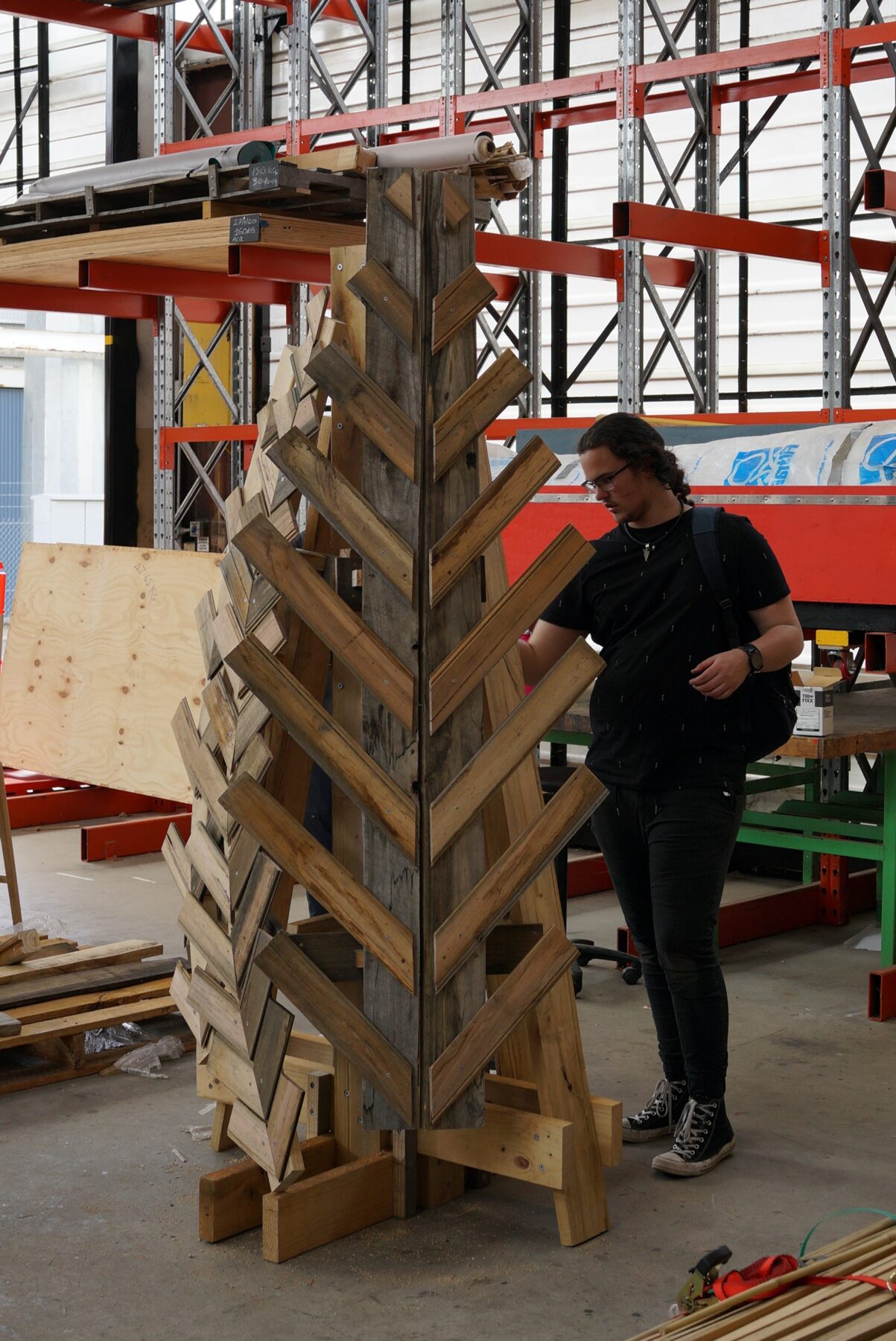On the banks of Tasmania’s Macquarie River, at the edge of the historical village of Ross, some very odd-looking structures are dotted along the water’s edge.
They form the Species Hotel Sculpture Walk. More than just public art, they play a crucial role in the local environment.
These ‘Species Hotels’ provide habitat for small wildlife, and are designed and constructed by Architecture and Design students from the University of Tasmania (UTAS).
“One of my favourites is the Gothic Treehouse,” says UTAS Architecture and Design lecturer Louise Wallis, who leads the project.
“It is designed for small birds – striated pardalotes, welcome swallows and scarlet robins – with nest boxes and rafters. There’s also space for micro bats in the columns, and a cavity at the base for a Tasmanian devil den.
“I like it because it’s a collage of a tree, but then it has a gable roof, like the sweet little houses in Ross. I think that mix between a tree and a house is quite sweet.”
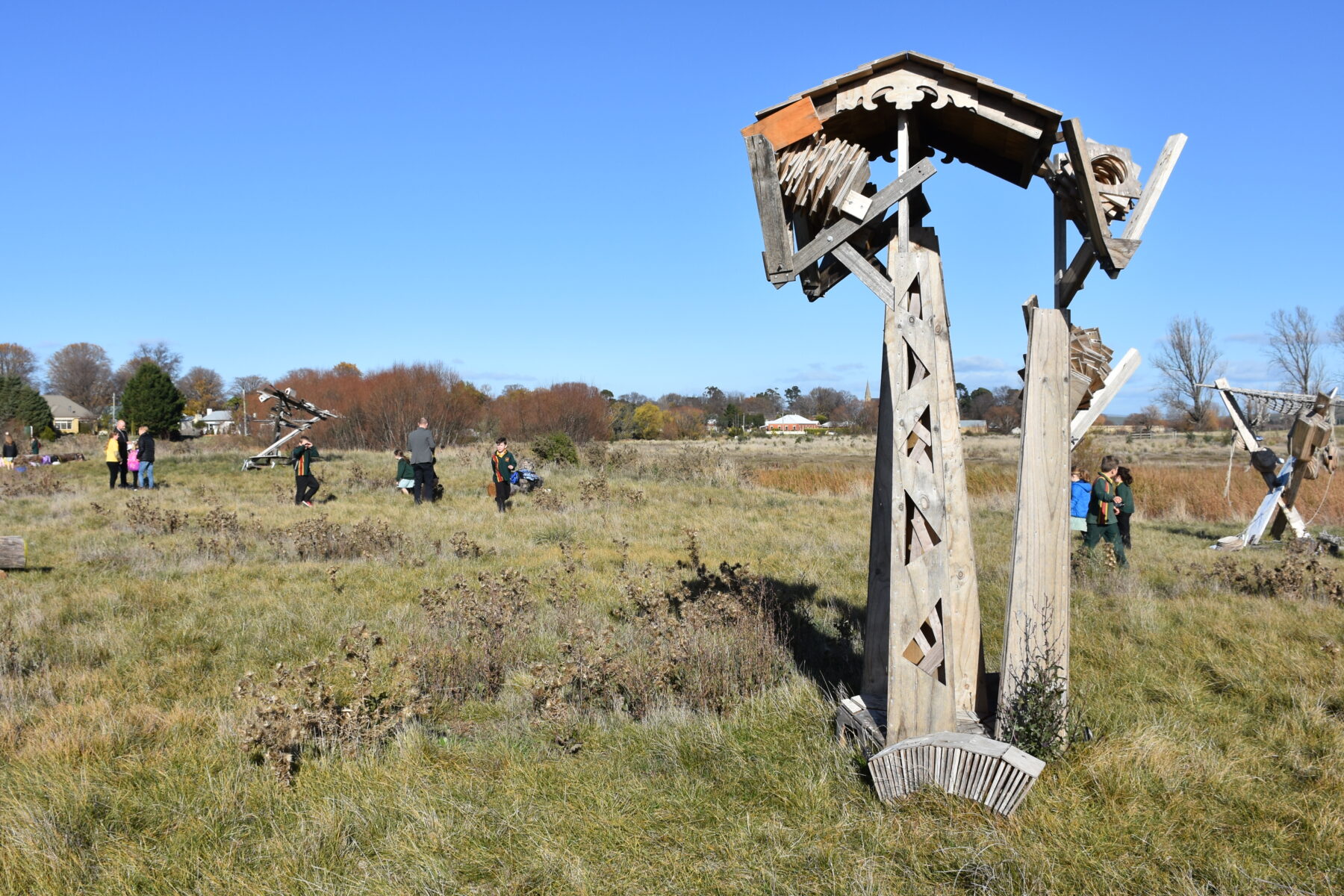
Originally, Louise planned for the project to be a one-off activity for her students. That was in 2016. Now it’s an integral part of first year for every UTAS Architecture and Design student.
“Every student going through first year has done this for the last six years or so, it’s pretty fantastic,” she says. “They are so motivated. Every year they have this amazing enthusiasm. They take it very seriously. I adore the commitment and interest they have.
“And every year we get completely new ideas. They’re essentially working to the same brief but we still haven’t managed to end up with any repetition. They always seem to find a new way to approach it.”
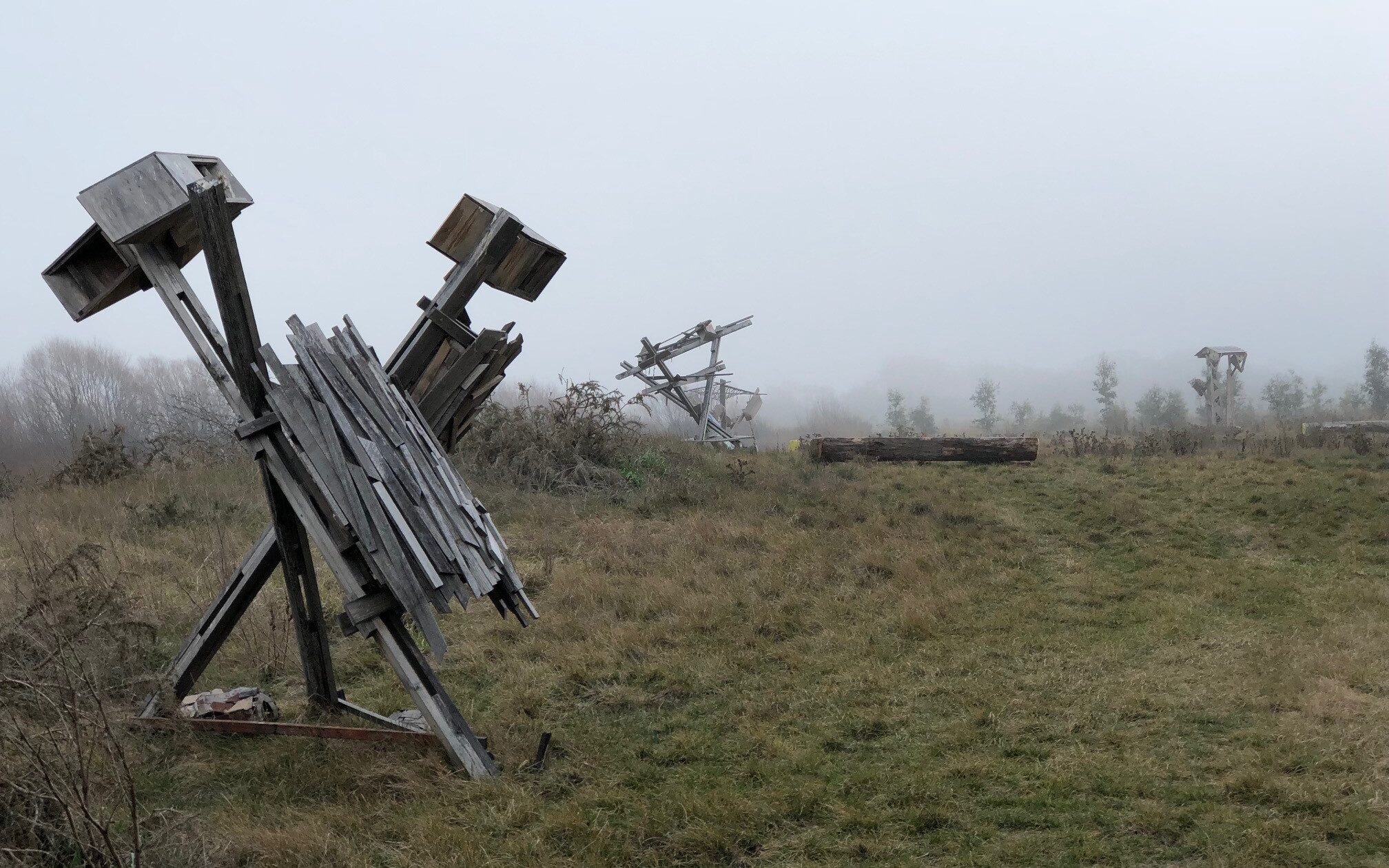
The Midlands
The Species Hotel project is a part of a larger initiative by Greening Australia, which has been working in the area for over a decade.
The Macquarie River runs through the Midlands region, a vast expanse of land that has been used for agriculture for more than 200 years.
“It’s an area that has been intensely grazed and farmed since white settlement,” says Greening Australia’s Tasmania Operations Lead, Dr Elizabeth Pietrzykowski, explaining: “Expansive land grants were provided to first settlers and they implemented the farming practices of their homeland. This included mass land clearing. It was very English-style farming where land is cleared of all the trees, logs and rocks, followed by erecting straight fences around square paddocks.”
Once a landscape of grasslands, woodlands and wetlands, maintained with traditional burning by its Aboriginal custodians, 32 nationally threatened native species (and another 180 native species threatened at the state level) once thrived here.
“There’s a significant number of threatened species that are no longer present on the mainland that we still have in Tassie but are only just surviving in the Midlands,” says Elizabeth. “They used to be prevalent. Now you just don’t see them.”
These species include the eastern barred bandicoot (Perameles gunnii), eastern bettong (Bettongia gaimardi), Tasmanian devil (Sarcophilus harrisii) and eastern quoll (Dasyurus viverrinus).
The situation is so dire that the Tasmanian Midlands have been classified as a ‘biodiversity hotspot’ – one in a list of ‘places on Earth that are both biologically rich – and deeply threatened’.


The small half-acre site on the riverbank at Ross – now home to the Species Hotel Sculpture Walk – is just one small patch of the 550 hectares of land that has been restored thanks to farmers partnering with the Greening Australia team, as part of the Tasmania Island Ark program, a collaboration with Bush Heritage, Tasmanian Land Conservancy, John and Pam Roberts Trust, UTAS, and landowners, all working together to landscape the barren land, recreate habitat and relink wildlife corridors.
Work began at this site 12 years ago when all livestock was removed and the team brought in rocks, boulders, logs, ground cover, native grasses and planted shrubs and tree seedlings. Well over 500 volunteers have been involved in many ways, but with the same objective, healing Country.
“By reinstating structure into what was a barren landscape – through planting ground, mid-storey and canopy species – a microclimate can begin to establish. This then provides shelter from the harsh Midlands conditions as well as habitat and food for insects and animals. Wind erosion of the ground is vastly reduced, allowing for residues and debris to accumulate, and water is trapped and absorbed into the ground, aiding in rebuilding the soil,” explains Elizabeth.
“As soon as you add that bit of structure, we find that Country can then start using its own environmental processes to regenerate itself. We are not going in and reinstating a complete forest, we’re giving it a kick start by adding that critical initial structure.”
This structure not only kicks starts the restoration of the land, but provides protection for wildlife to return.
And this is where the Species Hotels fit in, providing crucial habitat for these returning animals until the plantings are established enough to accommodate them.
“We work at the smaller end of the food chain, as it will take time for the necessary complex midstory to grow in these paddocks,” says Louise.
“We design the Species Hotels for small biota – invertebrates, small vertebrates, micro bats and small woodland birds.”
“In future, when the surrounding vegetation has matured, we will also design for larger biota such as eastern barred bandicoots and Tasmanian devils.”
The Brief
Students first meet with their ‘clients’. Of course, it is impossible to meet with the actual animals that will inhabit the structures, so information on what these animals need is gathered from meetings with experts in the field.
The designs must incorporate the two essential things an animal needs to live and thrive – shelter and access to food, but should cater to other individual needs too.
“For birds, that could mean there needs to be somewhere to roost, or social spaces like perches,” says Louise.
“More recently, students have been creating places for insects to nest, basically creating ‘room service’ for birds and microbats.”
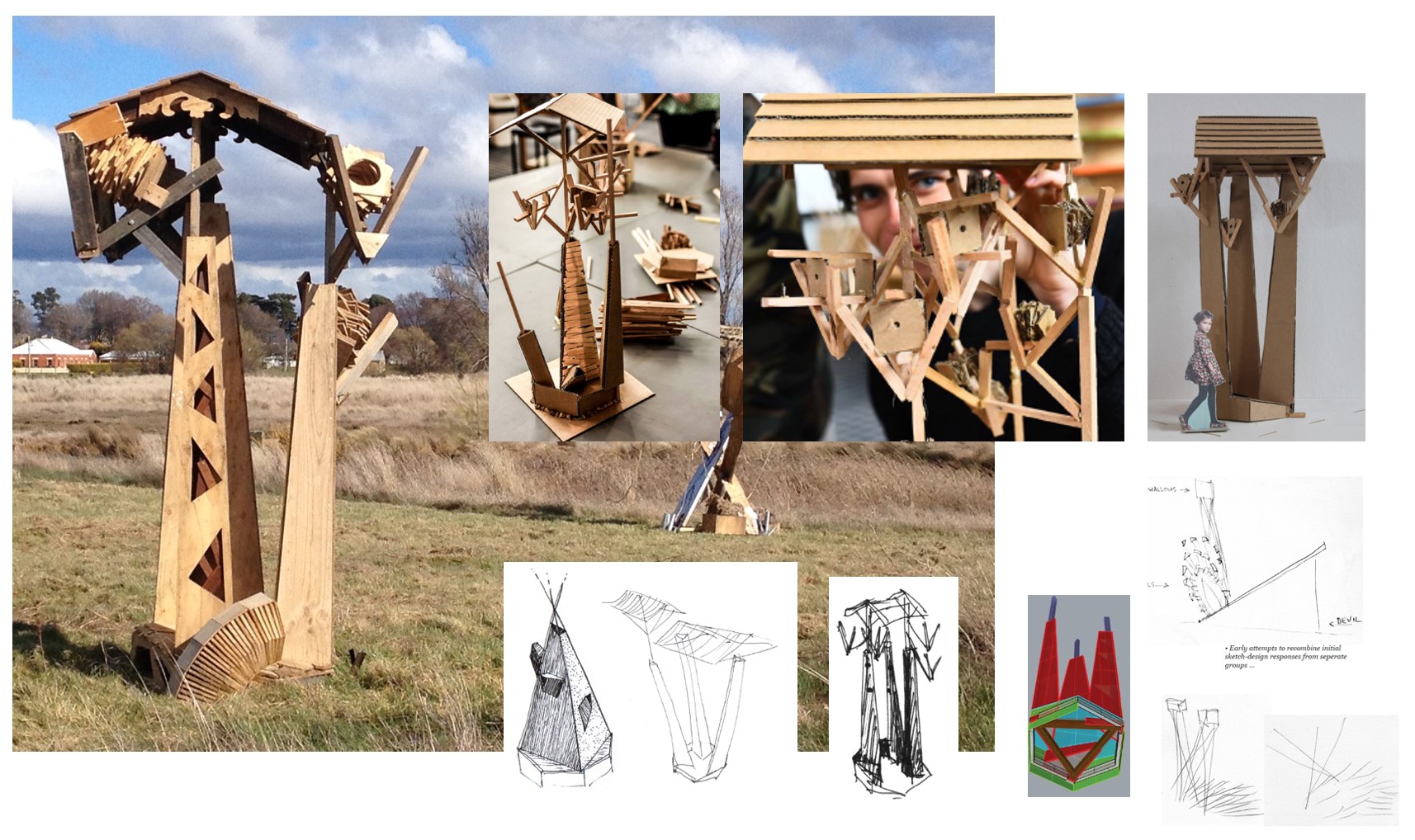
Sculptures must be 1 x 1 x 2m in size and made using materials that will not harm the environment.
“It’s on a flood plain so everything needs to be able to be washed down the river and not have an adverse impact,” says Louise.
“Most are made from salvaged timber, simple fastenings and a lot of joy.”
“The idea is that it gracefully disintegrates over time and becomes part of the the understorey, or understructure, to support more biodiversity. And as they die we’ll put new ones in.
“It’s fabulous because, as an educator, I want my students to understand the lifecycle of a material.”
Master of Architecture student Brad Reynolds created his Species Hotel in 2020.
“My team designed a structure for small birds,” he says. “We wrapped it in a windshield so when the birds were using it they weren’t having the wind blown on them too much. And we made that windshield look like leaves and ferns.”
“We also drilled some holes into the structure so that insects could burrow into them so that the birds had something to feed on.”
Brad says the project provides a great opportunity for students to create something from start to finish.
“It was great to get the opportunity to be hands-on, to actually build something from a scale model. A lot of what we do is designing and not actually building anything.”
Success
Not only have the species hotels been a hit with the humans who frequent the now public-access sculpture walk, native wildlife have also taken up residence within the structures.
“I haven’t seen one that hasn’t had some form of habitation,” says Louise.
“And the best way to tell which ones are the most popular is by the amount of bird poo on them!”
“A habitat has been created,” adds Elizabeth. “It was just farmland right up to the river. Now, there’s already invertebrates and little vertebrates that are moving back into the area, and birds hanging around.
“If the species hotels hadn’t been there, there would have been nothing for all these little creatures to inhabit safely. They’ve created an artificial habitat while we now wait for Country to heal.”
